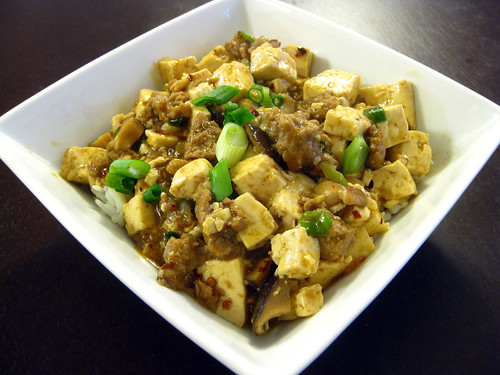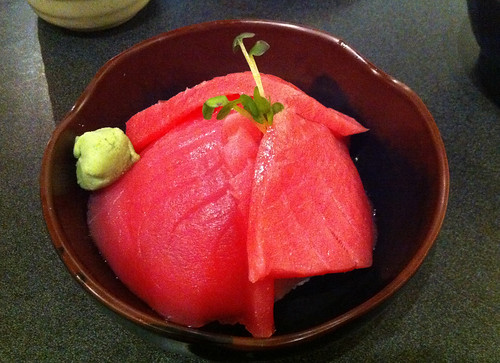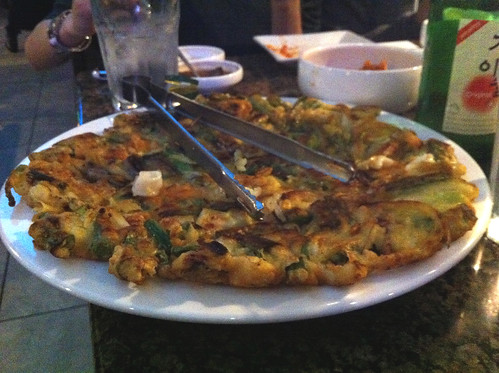Ma po tofu is ubiquitous on Chinese restaurant menus, but I never sampled the fiery, peppery dish until last year. It was mouth-numbingly hot, and it’s since become one of my favorite all-time dishes. As if to make up for lost time, I’ve spent the past few months eating ma po tofu constantly in restaurants and more recently, at home.
This homemade version of ma po tofu is just as delicious as what I’ve eaten from professional kitchens, and easy to cook. Ma po tofu is traditionally cooked with ground pork, but I substitute with chicken or turkey at home. The Sichuan peppercorns, however, are important to seek out as they’ll lend this dish that extra heat. It’s worth the pain (and slightly numb lips).
Ingredients:
3 dried shiitake mushrooms
6 ounces ground turkey
3 teaspoons soy sauce
4 teaspoons cornstarch
1 cup water
1/2 teaspoon sesame oil
1 tablespoon vegetable oil
1 teaspoon minced garlic
2 teaspoons hot bean paste
1/4 teaspoon toasted Sichuan peppercorns, ground
1/4 cup chopped water chestnuts
3 green onions, trimmed and cut into 1/2-inch pieces
1 14-ounce package soft tofu, drained and cut into 1/2-inch cubes
1. Pour enough warm water over the mushrooms in bowl to cover them completely. Soak until softened, about 20 minutes. Drain, discard the stems, and coarsely chop the caps.
2. Marinate the turkey: stir the ground turkey, 2 teaspoons of soy sauce, and 2 teaspoons of cornstarch together until evenly mixed. Let stand for 10 minutes.
3. Prepare the sauce:: stir the water, remaining two teaspoons soy sauce, and sesame oil together in a small bowl.
4. Heat a wok over high heat until hot. Add the oil and swirl to coat the sides. Add the garlic and stir-fry until fragrant, about 20 seconds. Add the turkey, hot bean paste, and Sichuan peppercorns and stir-fry until the turkey is crumbly, about 3 minutes.
5. Pour the sauce into the work, then stir in the mushrooms, water chestnuts and green onions. Slide the tofu into the work and stir gently to coat the tofu with the sauce and heat through, about 2 minutes.
6. In a small bowl, dissolve the remaining 2 teaspoons cornstarch in 2 teaspoons water. Pour the dissolved cornstarch into the wok and cook gently, stirring, until the sauce boils and thickens, about 1 minute. Spoon the tofu and sauce onto a serving platter and serve hot, alongside cooked rice.









